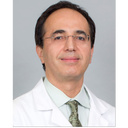One nostril more red and swollen than the other. Worried it is an infection. Seeing doc tomorrow. But what is the course of treatment for an infection?
Answers (4)
From board-certified doctors and trusted medical professionals
Dr. Ali Sajjadian, MD, FACS

Dr. Ali Sajjadian, MD, FACS
Board Certified Facial Plastic Surgeon
Answer
Dr. Mario J. Imola, MD, DDS
Dr. Mario J. Imola, MD, DDS
Board Certified Facial Plastic Surgeon
Answer
Dr. Robert Shumway, MD - Account Suspended
Dr. Robert Shumway, MD - Account Suspended
Board Certified Facial Plastic Surgeon
Answer
Dr. Richard W. Fleming, MD (retired)
Dr. Richard W. Fleming, MD (retired)
Board Certified Facial Plastic Surgeon
Answer
More Rhinoplasty Questions
See all Rhinoplasty Q&AWE SEND PRETTY
EMAILS
What’s trending? Who’s turning heads? Which TikTok myths need busting? We’ve got you. No fluff, no gatekeeping—just real talk. Get our free, unfiltered newsletter.